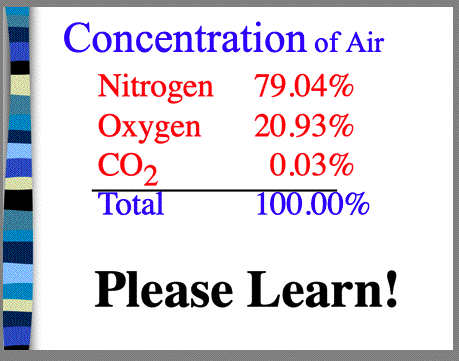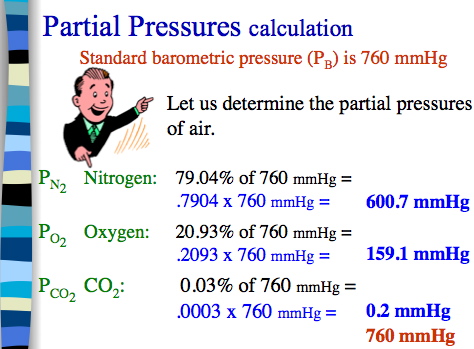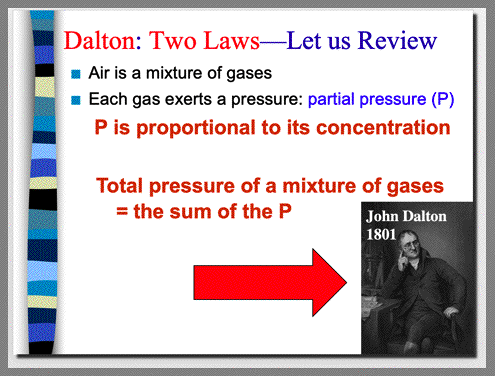| | Ex Phys Home  | | |
| Inspiration: Active Process | | Expiration: Passive Process | | External intercostal muscles contract, (expanding rib cage) | | External intercostal muscles relax, (reducing rib cage) | | Diaphragm contracts (expanding the thoracic cavity) | | Diaphragm relaxes (reducing the thoracic cavity) | | Volume Increases | | Volume Decreases | | Pressure Decreases | | Pressure Increases | | AIR FLOWS INTO THE LUNGS | | AIR FLOWS OUT OF LUNGS | | | |
 | | Class, please memorize these concentrations of air. |  |  | | Note: To calculate a partical pressure you must first convert the percent to a decimal number. To remove the percent you divide by 100 or simply move the decimal two places to the left. For instance, 0.03% converted to a decimal = .0003. After you have converted the percent to a decimal you can caculate the partial pressure. Class, for credit on the exam you must set up the equation as shown above. |  | | Class, please learn the Two Laws of John Dalton |  |  | | | | |
| | |


